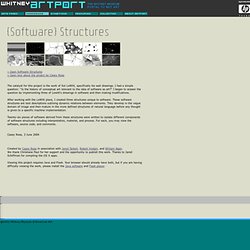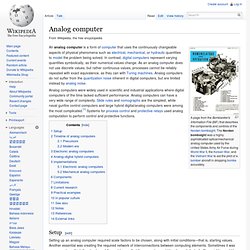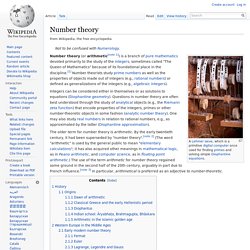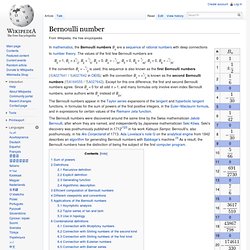

Ken goldberg, professor, uc berkeley. Public Art, Net Art. Joshua Davis. ACM SIGGRAPH News — siggraph.org. MAEDASTUDIO. Artport: Collection. Artport Commissions: {Software} Structure. » Open Software Structures » Open text about the project by Casey Reas The catalyst for this project is the work of Sol LeWitt, specifically his wall drawings.

I had a simple question: "Is the history of conceptual art relevant to the idea of software as art? " I began to answer the question by implementing three of Lewitt's drawings in software and then making modifications. After working with the LeWitt plans, I created three structures unique to software. These software structures are text descriptions outlining dynamic relations between elements. Twenty-six pieces of software derived from these structures were written to isolate different components of software structures including interpretation, material, and process. The Exploration of Computation. RobotDraw. John F. Simon, Jr. - Work Samples. PHYSICAL LANGUAGE WORKSHOP. Potatoland. Algorithmic] Visualization Research. Roman Verostko, Algorithmic Art.
AARON: A Product of Kurzweil CyberArt Technologies. Category Archives: Graphics. 2D to 3DAstronomy | Anatomy series #2 | Anatomy Series #2 These 2D-3D graphics can be viewed with or without 3D Chromadepth glasses which can be purchase at www.3dglassesonline.com.

Lillian Schwartz’s research began a number of years ago when she worked with art restorers in Italy to identify colors that had been lost in damaged art works, specifically frescoes by Piero Della Francesca. Working with individual pixels to determine the subtleties of the missing colors opened up other areas of study in anatomical structures, astronomical data obtained from telescopes, and her creations of the effects of global warming on our planet. Schwartz had been simultaneously working on images for 3D and found that she could “see” much more by alternating between 2D and 3D to separate areas that needed more detailed color decisions.
Photography Source: Jeffrey H. The free encyclopedia. John Whitney (animator) John Whitney, Sr.

(April 8, 1917 – September 22, 1995) was an American animator, composer and inventor, widely considered to be one of the fathers of computer animation. In 1960, he founded Motion Graphics Incorporated, which used a mechanical analogue computer of his own invention to create motion picture and television title sequences and commercials. The following year, he assembled a record of the visual effects he had perfected using his device, titled simply Catalog. In 1966, IBM awarded John Whitney, Sr. its first artist-in-residence position. By the 1970s, Whitney had abandoned his analogue computer in favour of faster, digital processes. All of John Whitney's sons (Michael, Mark and John Jr.) are also film-makers. The Whitney film collection is housed at the Academy Film Archive at the Academy of Motion Picture Arts and Sciences, where its preservation and restoration are ongoing.
Spirograph – A drawing toy with a resemblance to some of Whitney's art. Analog computer. A page from the Bombardier's Information File (BIF) that describes the components and controls of the Norden bombsight.

The Norden bombsight was a highly sophisticated optical/mechanical analog computer used by the United States Army Air Force during World War II, the Korean War, and the Vietnam War to aid the pilot of a bomber aircraft in dropping bombs accurately. Analog computers were widely used in scientific and industrial applications where digital computers of the time lacked sufficient performance. Analog computers can have a very wide range of complexity. Slide rules and nomographs are the simplest, while naval gunfire control computers and large hybrid digital/analog computers were among the most complicated.[1] Systems for process control and protective relays used analog computation to perform control and protective functions. Setup[edit] Setting up an analog computer required scale factors to be chosen, along with initial conditions—that is, starting values. Precursors[edit] Rapunsel. Riemann zeta function. , which converges when the real part of s is greater than 1.

More general representations of ζ(s) for all s are given below. The Riemann zeta function plays a pivotal role in analytic number theory and has applications in physics, probability theory, and applied statistics. This function, as a function of a real argument, was introduced and studied by Leonhard Euler in the first half of the eighteenth century without using complex analysis, which was not available at that time. Number theory. Number theory (or arithmetic[note 1]) is a branch of pure mathematics devoted primarily to the study of the integers, sometimes called "The Queen of Mathematics" because of its foundational place in the discipline.[1] Number theorists study prime numbers as well as the properties of objects made out of integers (e.g., rational numbers) or defined as generalizations of the integers (e.g., algebraic integers).

Integers can be considered either in themselves or as solutions to equations (Diophantine geometry). Questions in number theory are often best understood through the study of analytical objects (e.g., the Riemann zeta function) that encode properties of the integers, primes or other number-theoretic objects in some fashion (analytic number theory). One may also study real numbers in relation to rational numbers, e.g., as approximated by the latter (Diophantine approximation). The older term for number theory is arithmetic. History[edit] Bernoulli number. In mathematics, the Bernoulli numbers Bn are a sequence of rational numbers with deep connections to number theory.
